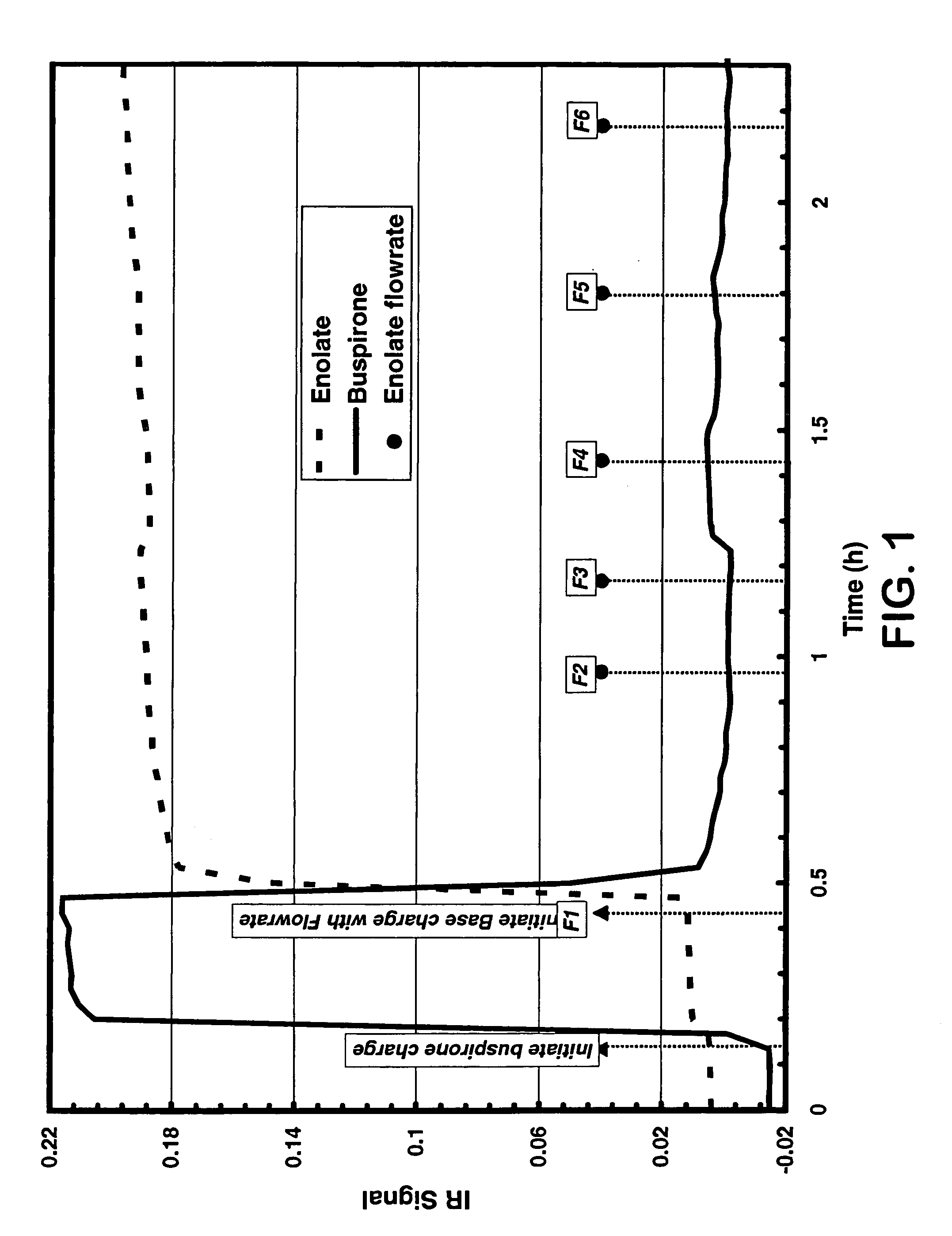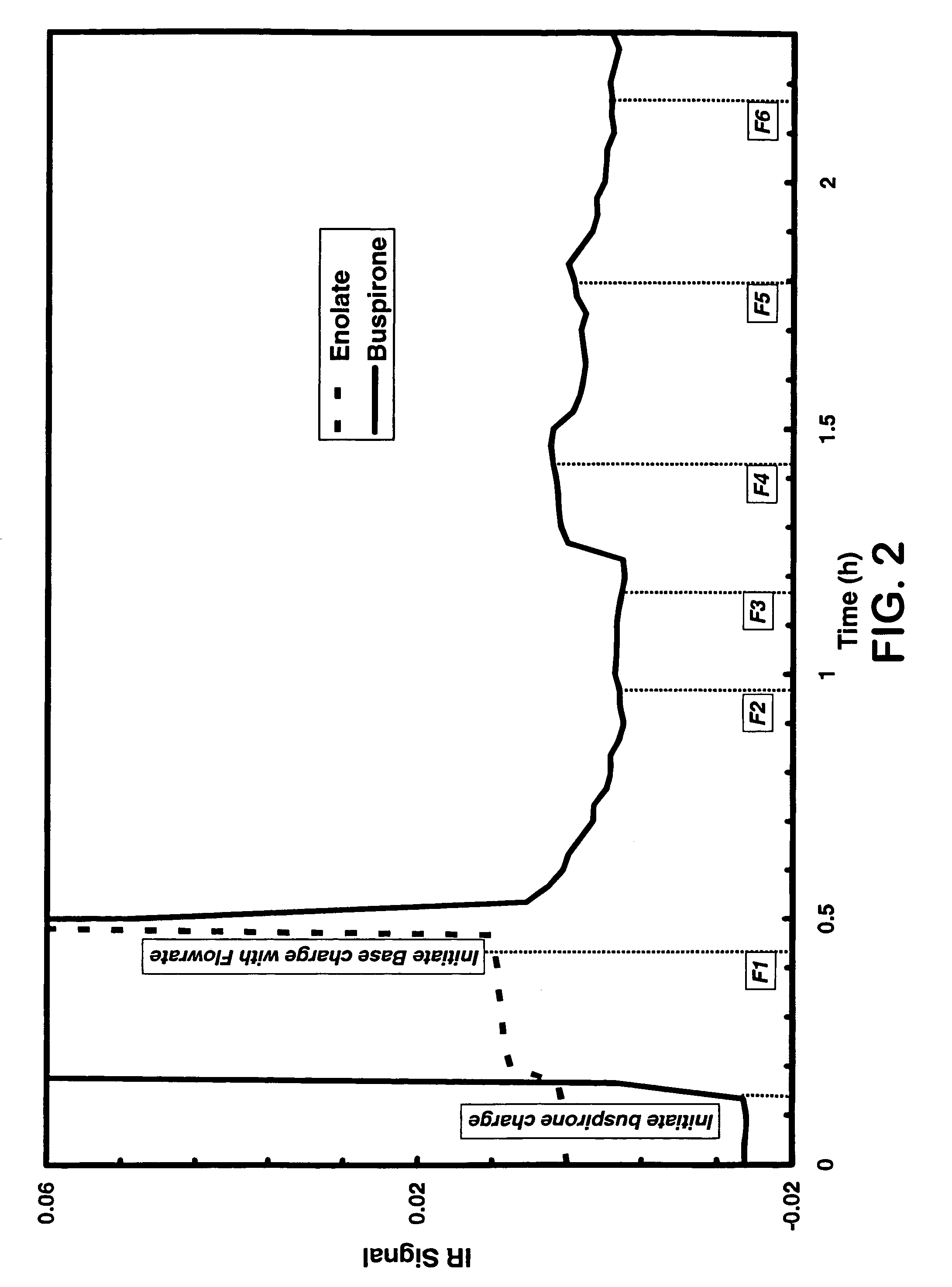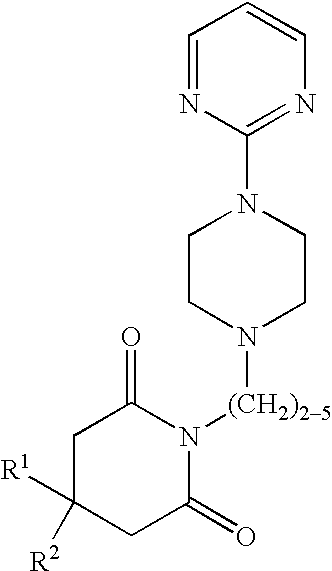Continuous process for producing hydroxyazapirones by oxidation
a technology of hydroxyazapirone and oxidation, which is applied in the field of continuous production of hydroxyazapirone, can solve the problems of large quantities of potentially unstable substances that cannot be produced, and achieve the effects of no appreciable increase in impurity production, good purity, and increased productivity
- Summary
- Abstract
- Description
- Claims
- Application Information
AI Technical Summary
Benefits of technology
Problems solved by technology
Method used
Image
Examples
example 1
Continuous Oxidation of Buspirone
[0045] A continuous oxidation to produce 6-hydroxybuspirone was carried out as follows: to produce the imide enolate anion, a mixture of buspirone free base, triethyl phosphite, and tetrahydrofuran (THF), at a rate of from 73-103 mL / min was mixed with NaHMDS (sodium hexamethyldisilazide) in THF flowing at a rate of 15-21 mL / min of NaHMDS and THF. These reagents were initially combined at approximately 20° C. and, while flowing, were continuously mixed and cooled to about −35° C. Cooling was accomplished in a static mix column followed by a multi-tube heat exchanger. The temperature profile along the length of the column was controlled by utilizing a trickle-bed reactor the first half of the length of which had an internal diameter of ⅞″ and the second half of which add an internal diameter of 1⅞″, and the total length of which was approximately 70″, with a single coolant flow from bottom to top, as described in patent application Ser. No. 60 / 510,984...
example 2
Continuous Oxidation of Buspirone Employing In-Situ Infrared Monitoring
[0046] A solution of buspirone, THF (15 mL / g) and triethyl phosphite (3.5 eq.) was passed through a static mixer (32-37 mL / min). In-line React-IR™ monitoring was implemented to observe the starting material signal. The THF solution of NaHMDS (1.0 M, 15-21 mL / min) was then started while maintaining the temperature of mixing in the static mixer at approximately −33° C. to −38° C. Small increases in the flow rate of the sodium bis(trimethylsilyl)amide were then performed until the IR signal for buspirone reached a minimum indicating complete deprotonation of buspirone generating the enolate of buspirone. The flow rate of the sodium bis(trimethylsilyl)amide solution was incrementally reduced until the buspirone IR signal indicated a 0.5% to 5% excess of buspirone (preferred range is 1-3% excess buspirone). Correlation of this signal with the purity profile using analytical HPLC provided a product stream with desirab...
PUM
 Login to View More
Login to View More Abstract
Description
Claims
Application Information
 Login to View More
Login to View More - R&D
- Intellectual Property
- Life Sciences
- Materials
- Tech Scout
- Unparalleled Data Quality
- Higher Quality Content
- 60% Fewer Hallucinations
Browse by: Latest US Patents, China's latest patents, Technical Efficacy Thesaurus, Application Domain, Technology Topic, Popular Technical Reports.
© 2025 PatSnap. All rights reserved.Legal|Privacy policy|Modern Slavery Act Transparency Statement|Sitemap|About US| Contact US: help@patsnap.com



